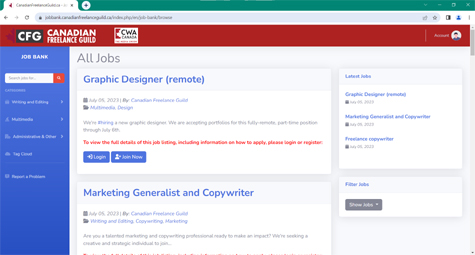Prestige can be an alluring quality for some. For Susan,* a 21-year-old student journalist, the impressive alumni—such as Margaret Atwood and Michael Ondaatje—of the literary magazine for which she interned was one of the many reasons she decided to perform unpaid work.
As for the other reasons?
“I was feeling scared about wanting to get into an industry that was so competitive and wanted to get as much experience as possible while I was still in my [undergraduate studies],” Susan admits.
The journalism industry is in a state of flux. With advertisers flocking to the online world to fund their ventures, print publications are compelled to shut down, cut their staff size, or limit their space for new hires. Media organizations sometimes feel they can’t afford to pay their interns and entry-level workers, so they turn to unpaid internships as a solution.
Susan’s fears are not exaggerated; the supply for jobs in the media industry is low, but the demand for work is high. What’s even more frightening is that the systemic inequality of unpaid internships catering to those who can afford to take up such labour takes the competition beyond a classist issue that’s rarely discussed in the media.
Although there has been growing coverage on unpaid interns filing lawsuits against the employers who failed to properly compensate them for their labour, there has not been enough coverage on the effects of unpaid work on marginalized groups.
According to Andrew Langille, a Toronto lawyer and an expert on youth employment and labour markets, part of the structural problem can be connected to the vague wording of labour laws that are meant to prevent unpaid labour from happening. “I think we are pushing young people into some very precarious situations, which can be taken as a form of structural violence inflicted by policy decisions,” he says.
As he goes on to say, “It’s safe to say that unpaid internships—or other forms of unpaid labour—are forms of precarious work. The people who do them don’t have a lot of power.”
Although the amount of research on socioeconomic inequality relating to unpaid internships is sparse, Langille turns to The Great Gatsby Curve, a chart-plotting curve of data compiled by Miles Corak, a Canadian economist, which correlates how the inequality of one generation affects opportunities for their descendants. In an interview with Sean McElwee for Mic.com, Corak stated that “What is underlying the curve and what draws those two themes together is the structure of opportunity—the tendency in countries with higher inequality to have more structured opportunity.”
When applied to the scenario of unpaid work in the media industry, the lack of opportunities that comes with not being able to afford an unpaid internship affects future job opportunities, too.
Greig de Peuter, assistant professor in the Department of Communication Studies at Wilfred Laurier University, agrees with this notion, but also sees the implications of this systemic issue beyond economics. As de Peuter says, although “zero-wage work is a de facto business model in many creative industries now,” the class barrier on taking unpaid labour is not limited to economic inequality. “[The class barrier] also potentially narrows the experiences and perspectives that are represented in the media.” The limited opportunities created by structural violence for those who cannot afford to take an unpaid internship is an intersectional issue: the more the diversity of the competition narrows down, the greater the lack of diversity represented in the industry.
In fact, de Peuter finds that “there’s little coverage connecting internships to race and gender inequity, for example, and media internships are rarely linked to the wider conditions of precarity in media work.”
Josh Mandryk, co-chair of Students against Unpaid Internship Scams, worries about not just the structural violence that limits the opportunities of job prospects for aspiring journalists who cannot afford to work unpaid, but also about a recent trend in employers using a change in terminology to bend the laws restricting unpaid work. “I have been seeing a [trend] of labeling unpaid work as ‘volunteer positions’ in job boards lately,” he has noted. “You really start to structure who can get into certain jobs. As the number of unpaid internships increase[s], the possibilities of going into journalism become discouraging,” Ella Henry, Mandryk’s co-chair of Students against Unpaid Internship Scams, adds.
What comes to mind is the serial intern archetype—employers will be attracted to those with more experience, so young professionals often find themselves trapped in a loop of completing one internship after another to gain said experience. What should be noted is that taking up an unpaid internship is not the sole requirement to landing that flashy journalist gig, especially since unpaid work is illegal. There are plenty of ways for aspiring journalists to work their way up to a secured job, such as freelancing or even securing paid internships. Yet, it’s the constant pressure to take up unpaid work due to the lack of paid work being offered in the industry, as well as the requirement of “x years of experience” in many entry-level job descriptions, that creates the competition for entry-level workers. A fast way to get those years of experience is through offering to work unpaid. Therefore, the serial intern archetype can be developed into a character with the privilege to work unpaid, and the ability to access more opportunities through those privileges.
The damaging aspect of the unpaid internships creating systemic inequality is that there is a culture of silence in the media industry regarding reporting about the structural violence of unpaid internships. Unpaid labourers face obstacles when attempting to complain about precarious work conditions, such as fear of being blacklisted in the media industry. This creates even more of an issue of structural violence. There may be advocacy groups, such as Henry’s and Mandryk’s organization and the Canadian Intern Association, that help to protect interns from labour violations like unpaid work, but Henry argues that “the onus should not be [placed on] those who take up the precarious work.”
Despite having struggled to balance her involvement with extracurricular activities, school work, and a part-time job, Susan still claims, “I think having done [two internships] opened a lot of doors for me.” She does, however, warn that the prestige of the publication’s name can only go so far—it’s the quality of the internship program that matters. “People in the industry know which publications [or] companies have actually beneficial internships. If you're not learning anything, people will pick up on that later when you're interviewing around.” It’s true that the onus should not be put on those who decide to take up unpaid work, but Susan recommends they proceed with caution if they decide to take part in unpaid work.
As for the culture of silence surrounding the insufficient amount of reporting on unpaid and precarious work in the media industry: perhaps it’s time for media industries to start reporting on labour violations in internships instead of the interns themselves. The breaking news may urge policy makers to consider addressing the structural violence occurring in this industry once the public knows about it.
*Name has been changed to protect the privacy of the person interviewed.
Originally published in The Strand, Volume 57, Issue 11
This article was funded by Media Works, a project of CWA Canada, in collaboration with the Canadian University Press and the National Campus and Community Radio Association. For more original labour stories and a handbook on media worker rights and labour reporting, visit www.media-works.org.




